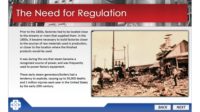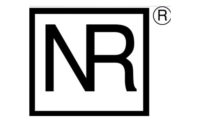It’s one thing to have equipment found to be in violation of code. It’s another thing to have an expensive and possibly fatal accident as a result of such operation. Avoid both of those things by noting the common mistakes regarding cutoffs and flow-sensing devices, and by engaging your inspector to make sure you are up on the latest mix of requirements for your jurisdiction and particular system.
Each year, The National Board of Boiler and Pressure Vessel Inspectors issues an annual Report of Violation Findings that identifies specific violations commonly found on five types of pressure equipment during jurisdiction-required inspections: high-pressure/high-temperature boilers; hot water heating/supply boilers; low-pressure steam boilers; potable water heaters; and pressure vessels.
For each type of pressure equipment, the report details specific safety violations found on installed safety devices. Mandated codes and jurisdictional requirements identify which safety devices are required to be installed for each pressure equipment type. These devices include: safety relief devices; low-water cutoffs/flow sensing devices; pressure controls; temperature controls; burner management controls; level indicators such as gage glasses, bulls-eyes, and fiber opticals; pressure/temperature indicators; and other pressure-retaining items associated with the proper operation of pressure equipment (piping, pumps, valves, expansion tanks, etc.).
The Violations Tracking Report exposes key problem areas to provide the pressure equipment industry with categorical statistics that can be analyzed and used to focus attention on installation, inspection, and maintenance of specific safety concerns.
2013 Violation Report Focus: Low-Water Cutoffs/Flow-Sensing Devices
Low-water cutoffs/flow-sensing devices are basic safety devices that will shut down and protect a boiler from failure due to low-water conditions or loss of flow. These protective devices are required by jurisdictional laws or regulations and are specified in jurisdictionally-mandated codes and standards for each of the following types of boilers: high-pressure/high-temperature boilers; low-pressure steam boilers; and hot water heating/supply boilers.
For the three types of boilers noted above, there were 3,104 total violations for low-water cutoffs/flow-sensing devices identified by jurisdictions within the 2013 reporting period. This article will focus on three key areas that had a combined total of 2,850 violations out of 3,104 noted, and which totaled 92% of violations: inoperative devices, missing or uninstalled devices, and installed devices with no manual resets.
Low-water fuel cutoffs and flow-sensing devices are relatively simple in design and manufacture; therefore, design or manufacturing defects rarely contribute to failure. However, these devices are either mechanical or electronic and do require basic maintenance and testing to function properly and ensure safe operation.
Inoperable: A Hard-Layer Lesson
The following true experience illustrates the importance of regular maintenance and testing.
A low-pressure steam boiler operating in a business for over 20 years was recently inspected by a qualified boiler inspector. That boiler inspector had repeatedly inspected the boiler from the time of installation. Within three months of the annual required internal inspection, the boiler overheated and catastrophically failed, causing hundreds of thousands of dollars in property damage, not including loss of business revenue (there was a happy ending, though: no fatalities!). The cause of the failure: the business was sold right after the inspection was performed, and the original owner explained to the new owner the required maintenance needed for the boiler, including addition of chemicals, but the new owner continued to add chemicals without performing any required blowdowns of the boiler and low-water cutoff.
When the float-type and probe-type low-water cutoffs were found, disassembled, and inspected, both the float chamber and probe were completely covered with a hard layer of chemical deposits, rendering both devices inoperative. The connecting 1-in piping for the float type low-water cutoff was completely filled solid with chemical deposit. The boiler operated for 20 years without any problems. If the new owner had understood the importance of continual maintenance, this incident easily would have been avoided.
Since there is no manmade device which is maintenance-free, performing proper maintenance is extremely important for safety. Although maintenance is important, testing is equally important. It is recommended that low-water fuel cutoffs be tested weekly while in operation by performing either an evaporation test or a slow drain test.
Missing or Uninstalled Devices
Missing or uninstalled devices are violations that should not occur if laws, regulations, codes, standards, and even manufacturers’ recommendations are reviewed, understood, and observed. Laws and regulations specified by jurisdictions are specific to the type of boiler and provide clear direction for installing low-water cutoffs and flow-sensing devices. These laws and regulations do provide the requirements for installation of these devices, but in doing so, they may refer to other codes or standards such as the National Board Inspection Code (NBIC); American Society of Mechanical Engineers (ASME) Section I, Power Boilers and Section IV, Heating Boilers; ASME CSD-1, Controls and Safety Devices for Automatically Fired Boilers; International Mechanical, Plumbing or Fuel Gas codes; as well as some fire codes and electrical codes. It is imperative that owners/users, installers, and contractors read and understand these referenced codes and standards.
Although these codes and standards strive to harmonize requirements, there are differences. The first step before any boiler installation is to find out what the jurisdiction (where the item is to be installed) requires for each type of boiler. Remember — jurisdictions are responsible for enforcing laws and regulations for public safety. Once jurisdictional requirements are known, questions such as how many, what type, when, where, and how to install low-water cutoffs and flow-sensing devices can easily be answered. Inspectors and jurisdictions should always be ready to offer guidance to those asking. Violations can be minimized if referenced standards and manufacturers’ recommendations are understood and followed.
Manual Resets
For example, manual resets are not always required to be installed on low-water cutoffs and are governed by jurisdictional requirements or the referencing standards specified in the jurisdictional laws and regulations. Manual reset on controls adds an extra layer of safety to ensure the operator verifies the low-water condition of the boiler and the cause of the boiler shutdown before manually resetting the control and restarting the boiler. As of fall 2014, 32 states, five Canadian Provinces, and Puerto Rico mandated in some part ASME CSD-1. Additionally, the International Mechanical Code by reference adopts ASME CSD-1. Currently, the International Mechanical Code has been adopted into state or local codes in 46 states, the District of Columbia, Guam, and the U.S. Virgin Islands.
To reinforce this need to understand differences between standards, let us look at the requirements for just one type of boiler — low-pressure steam boilers. ASME CSD-1 requires two low-water cutoffs. The lower-set cutoff must cause a safety shutdown and lockout. A manual reset may be incorporated in the low-water cutoff or be installed separately. The required manual reset device may be the instantaneous type or may include a time delay of not more than three minutes. The NBIC, Part 1, also requires two low-water cutoffs with the second requiring a manual reset. ASME Section IV requires only one low-water fuel cutoff and does not require a manual reset or a safety shutdown or lockout. Again, this is just for one type of boiler.
There are many other types, such as modular steam or hot water, hot water heating/supply, high-pressure steam, high-temperature, electric, or miniature boilers. All these various boilers have different requirements for installation and operation of low-water cutoffs. Without a detailed understanding of jurisdictionally-mandated standards, it is no wonder that we find so many violations when performing boiler inspections.
For forced circulation-type boilers with no definitive water line, in lieu of the requirements for low-water cutoffs, flow-sensing controls are required to prevent burner operation when the circulating flow is below a safe minimum. Again, jurisdictional regulations and referenced standards will define the installation and operation requirements to be met for these devices.
Minimizing Low-Water Cutoff Device Violations
What can we do to minimize the number of low-water cutoff device violations? First and foremost, knowledge is key. Laws, regulations, codes, standards, and manufacturers’ recommendations are continually being revised, which challenges inspectors to read, understand, and share this knowledge on an ongoing basis. Each and every boiler inspector, when performing inspections, should take the time to talk with the owners, maintenance personnel, operators, contractors, and installers and inform them of boiler safety requirements. Whether they are implementing old or new requirements, inspectors can make a difference by promoting public understanding and taking time to answer any questions users may have.
The National Board also provides information relating to codes and standards and pressure equipment safety, and inspectors should take advantage of the education and training the National Board offers through classroom and online (web-based) training courses, as well as the 70-plus free technical articles accessible on the National Board website.
Just as safety relief devices are important to prevent over-pressure conditions in pressure equipment, operating boilers must be protected from low-water or flow conditions that can cause catastrophic failure if not corrected. Knowledge, understanding, and training are keys to success. Inspectors, contractor installers, jurisdictions, and even manufacturers can all play an important role in safety by continually striving to learn, understand, and, most of all, take time to teach others the importance of proper installation, testing, and maintenance needed to minimize low-water cutoff and flow device violations.
For more information: The next report, the 2014 National Board Annual Violations Tracking Report, will be available in the summer 2015 issue of the National Board BULLETIN. Quarterly reports are issued online at www.nationalboard.org. Past Violation Reports can be accessed for free on the website by searching past summer issues of the BULLETIN.





